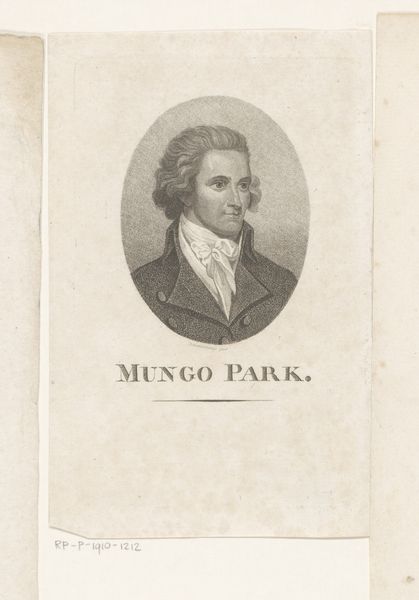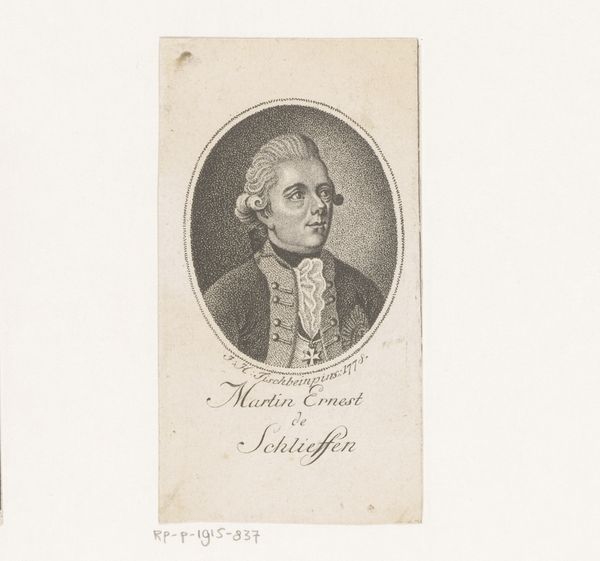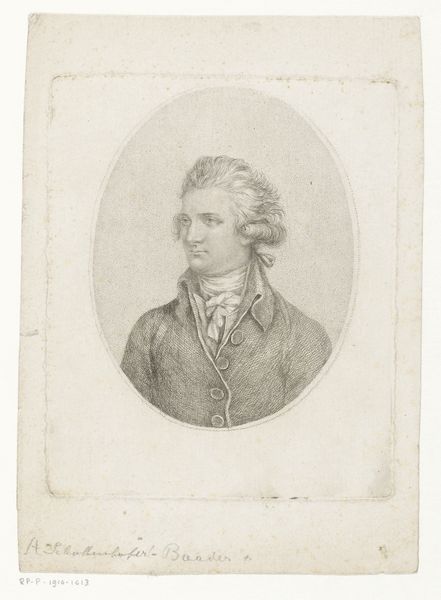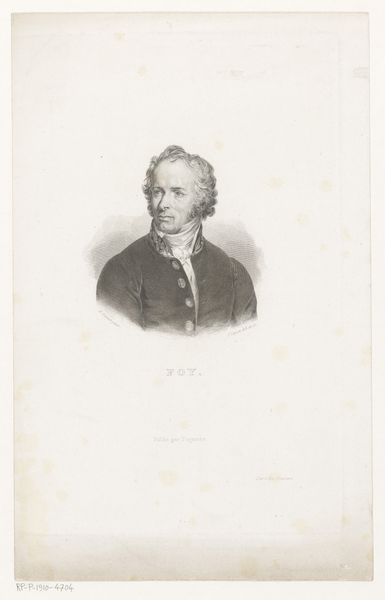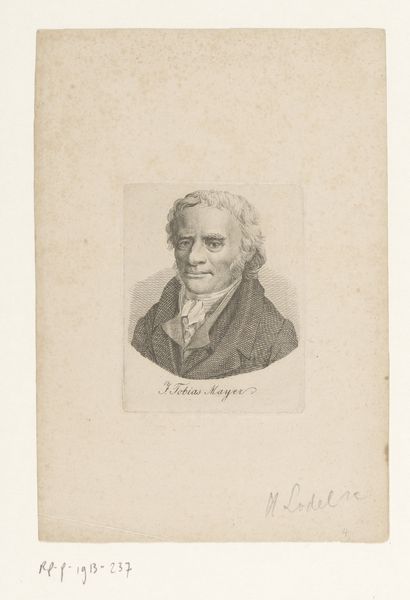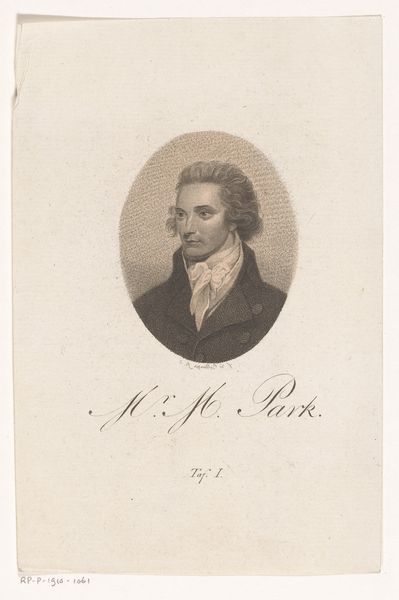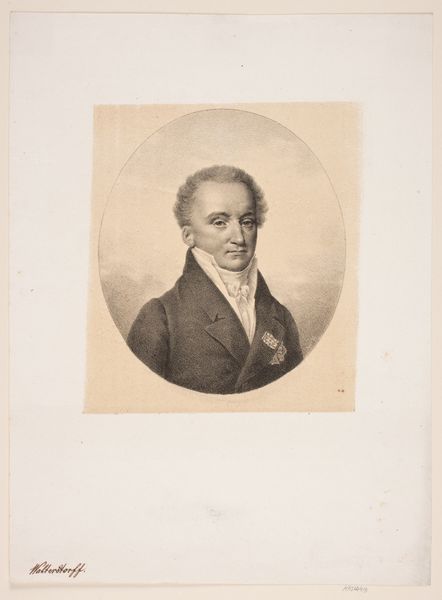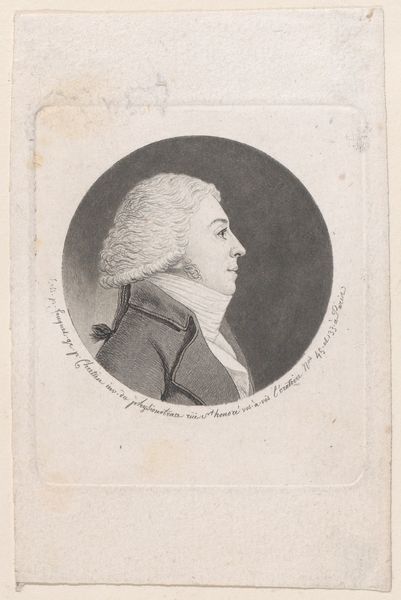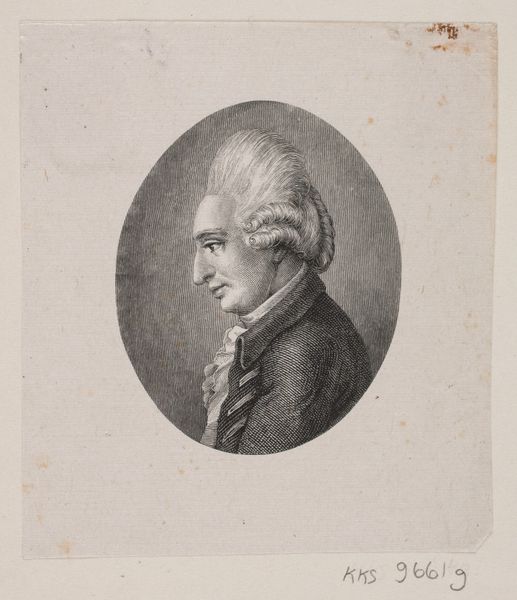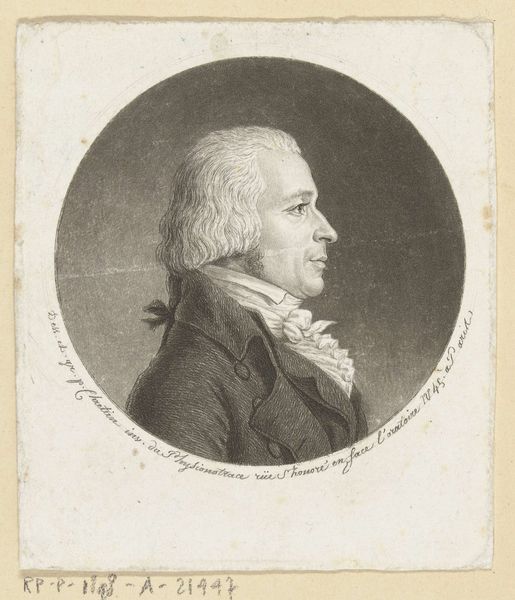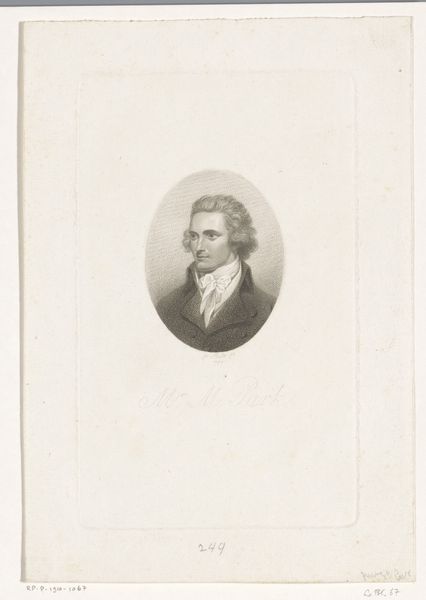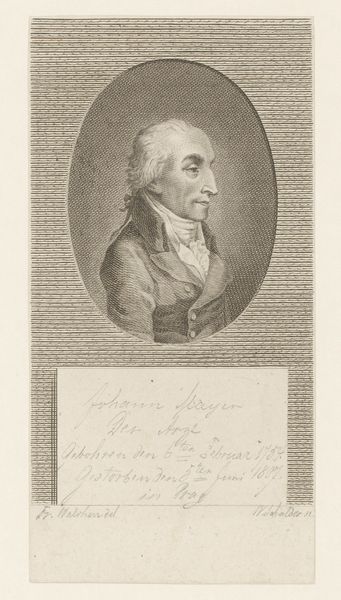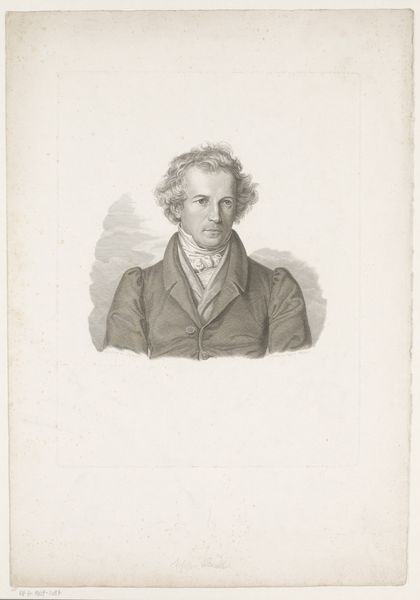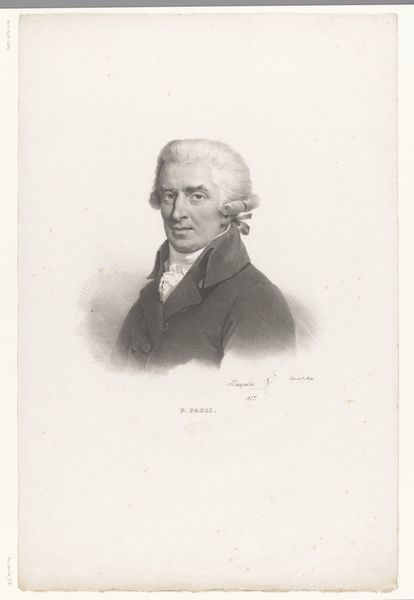
engraving
#
portrait
#
neoclacissism
#
old engraving style
#
historical photography
#
portrait reference
#
history-painting
#
engraving
Dimensions: height 175 mm, width 109 mm
Copyright: Rijks Museum: Open Domain
Editor: This engraving, simply titled "Portret van Mungo Park," dating from somewhere between 1792 and 1807, offers a really compelling image of its subject. It strikes me as rather formal. How do you interpret this work, given its historical context? Curator: This portrait, viewed through a contemporary lens, reveals the complex entanglement of exploration and colonialism. Mungo Park, lauded as an explorer, was in reality charting territories for British expansion, fundamentally reshaping African societies. Editor: So the portrait, while seemingly straightforward, actually represents something much more loaded? Curator: Exactly. The very act of depicting Park, immortalizing him in this Neoclassical style, serves to legitimize his role in this project of colonial power. Consider the artistic choices: the emphasis on his individual heroism obscures the violence inherent in his expeditions. This relates to Edward Said's work around "Orientalism," right? How the West constructs images of the East to solidify its power. What feelings does the contrast between the apparent formality and this underlying narrative create for you? Editor: It makes me see the portrait in a totally different way, like it's both a historical document and a statement of power. I guess it means that with this "old engraving style" or even with more modern techniques we can make people appear to be much better than they really were. Curator: Absolutely. Analyzing historical portraiture requires unpacking the social, political, and ethical frameworks that shaped both the artist’s intention and the reception of the artwork. Now I see it as less of an objective representation and more as a carefully constructed narrative that supported colonial ideology. It makes you think about who gets remembered, and how, doesn't it?
Comments
No comments
Be the first to comment and join the conversation on the ultimate creative platform.
